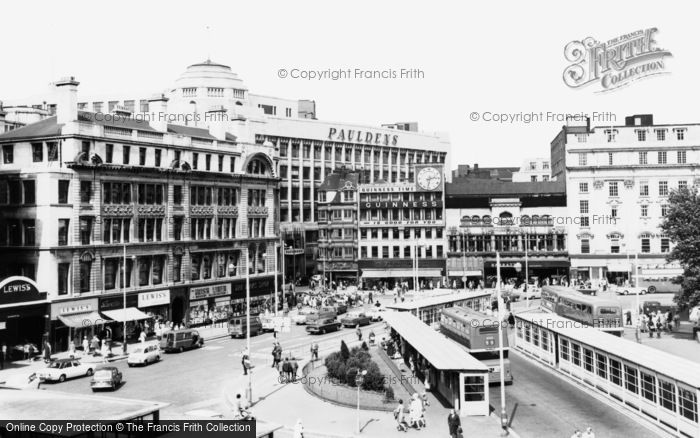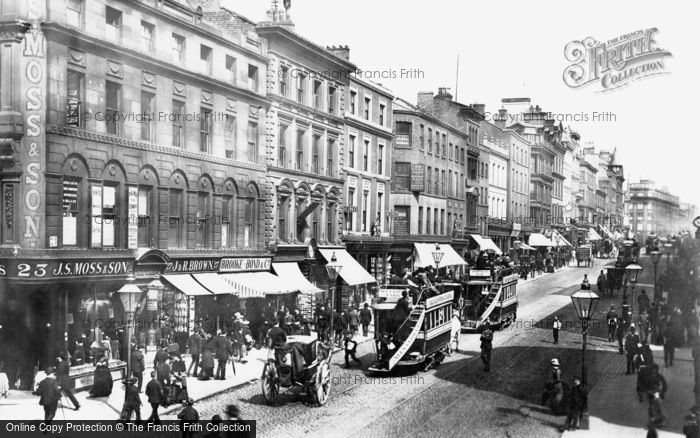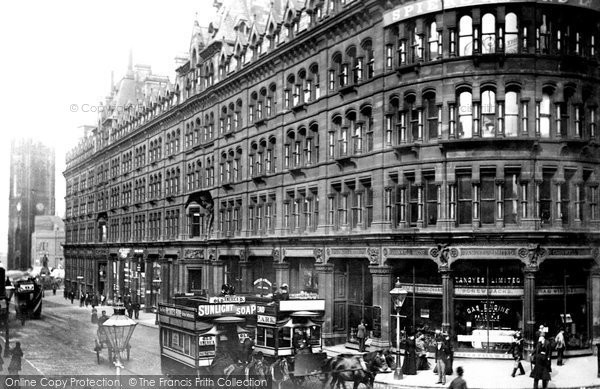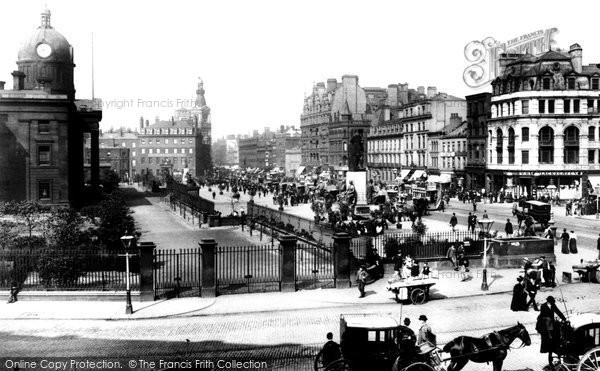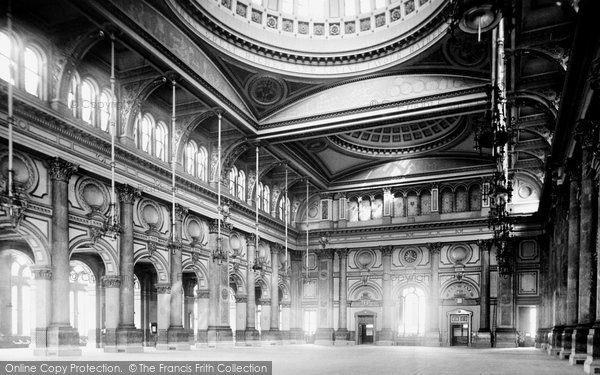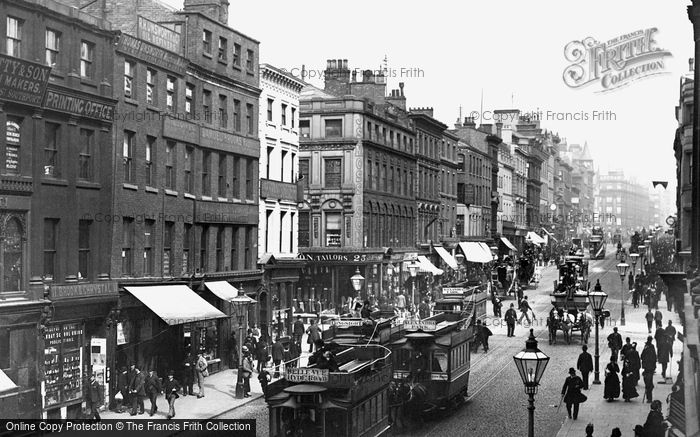Merry Christmas & Happy New Year!
Christmas Deliveries: If you placed an order on or before midday on Friday 19th December for Christmas delivery it was despatched before the Royal Mail or Parcel Force deadline and therefore should be received in time for Christmas. Orders placed after midday on Friday 19th December will be delivered in the New Year.
Please Note: Our offices and factory are now closed until Monday 5th January when we will be pleased to deal with any queries that have arisen during the holiday period.
During the holiday our Gift Cards may still be ordered for any last minute orders and will be sent automatically by email direct to your recipient - see here: Gift Cards
Manchester History
The history of Manchester and specially selected photographs
The busy modern city of Manchester stands on historic foundations. It was the site of the Roman Mancunium, a camp built by Agricola’s legions on the banks of the River Irwell in AD 79, on their way from Chester to York. There was a settlement in the Manchester area in Anglo-Saxon times, called Mamecaster. The Domesday Book of 1086 records St Mary’s Church, which probably stood on the site of the present cathedral.
It was weaving, first of woollen goods and then of cotton, which brought Manchester its 19th-century power and glory, but the city’s weaving tradition dates back to Flemish weavers introduced by Edward III in the 14th century. However, Manchester was little more than a market town until the Industrial Revolution made it the main trading centre for Lancashire cotton.
Soon Manchester was known as ‘Cottonopolis, and was at the hub of the expanding cotton trade. Proximity to coal supplies and an ideal climate for textile work helped its development; the damp climate prevented the cotton thread from splitting when being spun. It was the world’s first truly industrial city, a role symbolised by the first commercial use of a steam engine in 1783, at Richard Arkwright’s cotton spinning factory. This rapid expansion and population growth brought its own problems: Alexis de Tocqueville called Manchester a ‘foul drain’ from which ‘the greatest stream of industry flows out to fertilize the whole world’. A vivid (but possibly exaggerated) description of Manchester at this time was also written by Engels in ‘The Condition of the Working Class in England’ (1845). As Manchester grew in the 19th century it had to break away from the strong influence of Salford, which ruled over the ancient ‘hundred’ and held all the administrative power in the area. Manchester’s influence increased by the fact that the parish church was situated in its area; after the church was turned into a collegiate church, Manchester became the centre of learning and law-making in the area. Dedicated to the Glorious Virgin and the Holy Martyrs St Denis and St George, the collegiate church is now Manchester’s cathedral. It was originally built by Thomas, Lord de la Warre in the 15th century. It was the church’s first warden, John Huntingdon, who built the choir; his successor added the nave, and the third warden widened the choir and added the clerestory. During restoration work in the 1880s some fragments of Saxon masonry were unearthed.
‘The fastest growing town in England’ was how Manchester was described 250 years ago. There seemed to be a determination in the minds of the burghers and leading citizens to make something of the place, to push forward this small town in north-west England and stamp its name not just on the rest of the country, but on the world. They succeeded, and in the years that followed Manchester became the place where the first canal system was started, passenger railways were born, and plans for a great ship canal were hatched – and in more recent times it was the birthplace of the modern computer.
The Charter of Incorporation of the Borough of Manchester was granted by Queen Victoria on 23rd October 1838. There had been some unrest at the way Manchester had been managed, and it was Richard Cobden who urged Mancunians to 'put an end to this thing' and have a council elected by the people. After the Municipal Corporation Act had been passed in 1835, many Lancashire towns had started down the road to becoming Boroughs, but Manchester did not become a Corporation until that day in 1838; after much debate, and accusations of vote rigging and ballot fixing, Manchester was given the right to set aside the self-elected officials and hold the first municipal election.
By 1842 Manchester had its own coat of arms, a crest and a motto - ‘Concilio et Labore’, meaning ‘By Council and Work’.
A black event in Manchester’s history took place in 1819 on St Peter’s Field, where St Peter’s Square is now. During a period of industrial depression, high unemployment and great poverty, 50,000 people assembled in St Peter’s Field for a political meeting. The meeting was broken up by mounted troopers with drawn sabres; eleven people were killed and hundreds were injured in what became known as the Peterloo Massacre (a reference to the battle of Waterloo which had been fought four years earlier).
The Royal Exchange in Manchester was where the Lancashire cotton industry did business with the world. The words around the great dome in the centre of the building were: ‘A good name is rather to be chosen than great riches, and loving favour rather than silver and gold’. The Great Hall of the Royal Exchange was dubbed ‘the largest room in the world’. It was 4,405 square yards in area, and 96 feet high, 125 feet high to the central dome. The floor of the Royal Exchange was the scene of frantic activity on Tuesdays and Fridays, when at the hour of High Exchange anything up to 1,100 men would gather here and shout at one another, and many a fortune was made or lost. Though the floor appeared chaotic to the outsider, it was in fact well organised; there were numbers on the posts running down the hall, and letters on the posts running across the hall, so that businesses could co-ordinate where to meet in such a busy and packed room. Buyers, agents, manufacturers and merchants had their regular places. Those who did their business here would know where to find the Blackburn cotton manufacturers, or the Oldham cotton spinners, as well as cotton brokers, agents for the Indian and Chinese markets, and machinery manufacturers.
The novel 'North and South' by Mrs Elizabeth Gaskell of 1855 features the experiences of Margaret Hale in Manchester, with the city disguised under the fictional name of Milton. Mrs Gaskell knew Manchester well, as she was the wife of William Gaskell, the Unitarian minister of Cross Street Chapel.
The Charter which made Manchester a city was granted on 29th March 1853, so it had risen from a suburb of Salford to a city in only fifteen years. The town's progress to the status of city was rapid, probably the fastest in in England. By 1839 it had its own Justice of the Peace, and by 1842 a coat of arms, a crest and motto - 'Concilio et Labore', meaning 'By Council and Work'. The rivalry between Liverpool and Manchester was such that advisers to Queen Victoria said that the honour of the title Lord Mayor could not be given to one city and not the other. At exactly 11 am on August 3rd 1893, one of Queen Victoria's ministers entered the office of both Liverpool and Manchester's mayors and laid before them her majesty's permission to the title Lord Mayor; thus neither could claim a victory over the other.
In 1866 the Corporation decided that the design for the Town Hall should be by open competition, a normal 19th-century practice for civic buildings. There were 130 entries, the winner being Alfred Waterhouse. The Town Hall covered a site of nearly two acres; building began in 1868 and was also completed in 1877 at a cost of about £1 million.
In 1824 the Royal Manchester Institution chose the design of Charles Barry (1795-1860) for their new headquarters in Mosley Street. The new building opened in 1834, but was taken over by Manchester Corporation in 1882, on the understanding that they spent £2,000 per year buying works of art, and became the City Art Gallery. Manchester’s City Art Gallery is famous for its collection of paintings, specialising in the development of English art from the 16th century to the present day. Manchester’s City Art Gallery has a wonderful collection of the work of the famous local artist L S Lowry. Manchester’s City Art Gallery was one of the first supporters of this artist, who is famous for his ‘matchstick men’ and scenes of industrial life.
The Manchester Ship Canal was opened in 1894,as a way of shipping goods out directly from Manchester, thus avoiding the costs of railway transport and Liverpool’s high dock charges. One Manchester merchant said that when sending a ton of goods from Manchester to Australia, it was costing him more for the journey to Liverpool and on to the ship that for the rest of the trip to the customer. The answer came from a man called Daniel Adamson, who called a meeting of all the best minds and mayors around Manchester to discuss a plan ‘to bring the sea to Manchester’. One of the men he invited was Marshall Stevens, who was made head of the committee to steer the plans through Parliament - the Manchester Ship Canal bill got through Parliament at its third attempt. When the Ship Canal opened, making the city a port 36 miles from the sea, the traffic was a mixed bag of sailing ships, steam ships and motor vessels. Despite the present-day lack of commercial traffic, the Canal is still there; 70,000 gallons of water an hour on average flow down the Canal, and it needs to be dredged regularly and kept in good order to prevent flooding.
By 1900, the city of Manchester might be excused from being rather smug and satisfied. It had opened the Manchester Ship Canal, in the face of very fierce opposition, which was starting to show returns. Trafford Park, the world's first Industrial Park, was filling up, and the people of Manchester were enjoying the parks and open spaces that the city was providing. More and more of the small Urban District Councils that bordered the city wanted to join the great metropolis and reap the benefits of cheap gas and electricity, lower rates, and managed sewage systems, all of which were big selling points. Since then, Greater Manchester has taken quite a few forms, including that of a new county. The spirit and perserverance of old Manchester still drives it forward.
Further Reading
To discover the histories of other local UK places, visit our Frith History homepage.

